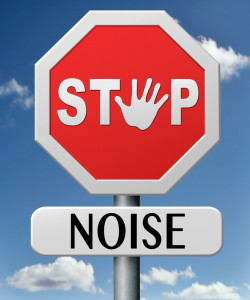Doesn’t Sound Good

 If you live in an apartment, condominium or townhome building, there’s a good chance you occasionally hear your neighbors’ activities. Absolute silence is an unreasonable expectation, but you shouldn’t have to overhear your neighbors’ telephone conversations or listen to their music. Most building codes have requirements regarding sound transmission between dwellings in multi-family housing, but they’re less stringent than many consider acceptable.
If you live in an apartment, condominium or townhome building, there’s a good chance you occasionally hear your neighbors’ activities. Absolute silence is an unreasonable expectation, but you shouldn’t have to overhear your neighbors’ telephone conversations or listen to their music. Most building codes have requirements regarding sound transmission between dwellings in multi-family housing, but they’re less stringent than many consider acceptable.
The current International Building Code (IBC) stipulates theoretical airborne and structure-borne Sound Transmission Characteristic (STC) ratings of 50 for wall and floor assemblies between units. A rating of 45 is allowable if field-tested. STC values are roughly the same as decibels (db). Sounds decrease by half or increase by double for every ten db of change. Accordingly, a sound measured at 90 db would be perceived as half as loud as a 100 db sound and an assembly with an STC rating of 50 would be twice as effective as one with a rating of 40.
In theory, walls and floors rated STC 50 should block most sounds coming from your neighbors. Fairly loud home entertainment systems can be heard, but faintly. At 45, the sounds would be considerably more audible. Code requirements notwithstanding, buildings under construction are seldom tested and actual acoustical characteristics could be well below acceptable.
Attenuation of structure-borne sound (such as footfalls, appliance noises, etc.) is achieved by installing materials that do not readily transfer vibrations (resilient pads) at strategic locations between living spaces. Airborne sound attenuation is achieved by installing materials (such as batt insulation) that absorb sound between living spaces. Obviously, the best time to install these is during construction.
While flooring could be removed and buffering pads could be installed after the fact, it would be extremely costly and disruptive to do so. Still, there are things that can be done to reduce noise trespass to more tolerable levels. Short of tearing up floors, the only way to reduce structure borne noise is to create an absorptive barrier between the source and target spaces. An example would be a second drywall ceiling, attached to resilient furring channels with a sound absorbing mat sandwiched between it and the original ceiling. There are also drywall products that transfer less sound than conventional gypsum board.
Airborne noise transmission could be improved by blowing loose insulation into wall and ceiling cavities between units. There are also a variety of products (sound reduction sheeting and mats) that could be installed over walls and ceilings to help reduce intrusive sounds. There are of course aesthetic considerations with this measure.
A number of manufacturers offer sound absorbing paint. The effectiveness of those products is at best, questionable. Some attenuation is possible, but only in the mid-range of the audible spectrum and only at imperceptible levels
